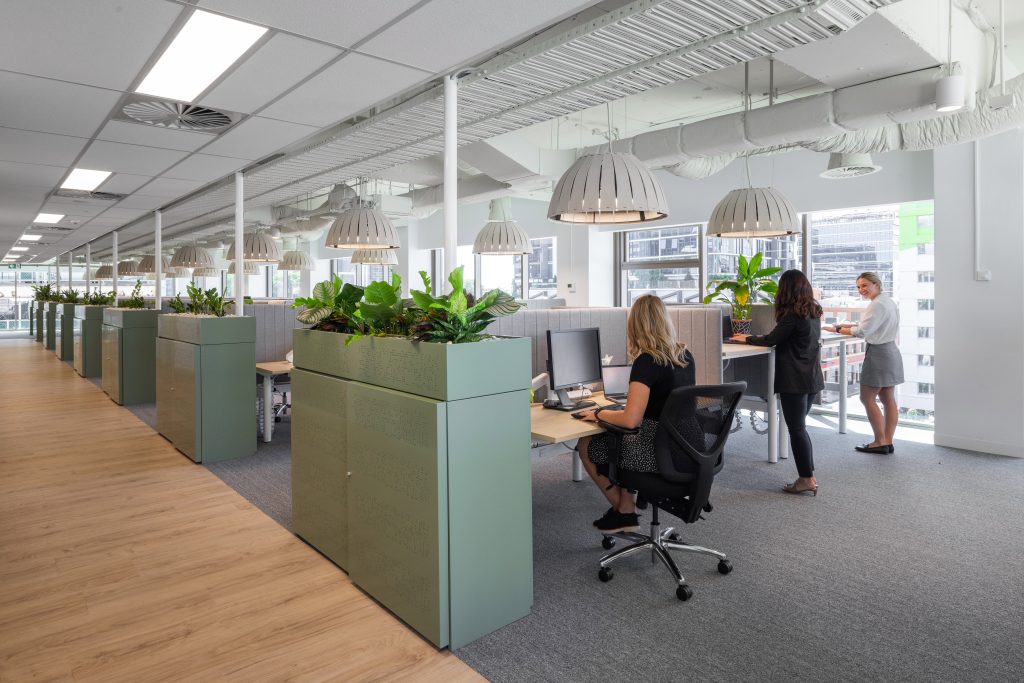Acoustic lighting is a revolutionary addition to the interior designer’s toolkit. Combining the effective sound absorption of traditional acoustic panels with energy-efficient LED illumination, acoustic lighting is a versatile and streamlined approach to mitigating unwanted environmental noise. However, with slightly higher price-point than other single-purpose solutions, are they worth the cost?
Let’s take a closer look at how architects and designers can design workspaces that can dramatically increase workers’ satisfaction and productivity without significantly increasing building or design costs.
Mitigating the cost of office noise
The open-plan concept remains attractive to architects and designers because it offers advantages of cost and efficiency. However, open-plan workspaces also pose significant challenges for both their designers and their inhabitants. Chief among these—though all-too-frequently neglected among design considerations—is environmental noise. Though it is difficult to quantify the precise impact of workplace noise on a companies’ bottom line, we can be sure that it is significant. One research firm estimated the annual cost of distraction to knowledge workers at $588 billion in the U.S. alone, while the European Union calculates financial costs due to “excessive noise” within member states to be around €40 billion.
Cost-effectiveness of acoustic lighting
Every building design includes a plan and budget for illumination. Acoustic lighting illuminates while also providing effective sound control—without requiring that separate resources be directed towards acoustic engineering or planning. By so doing, you can design a sensory environment—with intentionally-chosen levels of light and sound—that boosts worker productivity. In these surroundings, employees will experience less stress, which will better their health, comfort, focus and co-worker relationships. These powerful benefits make acoustic lighting a wise investment for designers, architects and all workspace planners—indeed for anyone who seeks to improve employee well-being, boost productivity, and enhance office culture.
Enhances the effectiveness of other solutions
The more surface area of acoustic material is exposed in a room, the more sound reverberation will be dampened. Acoustic light fixtures perform better than ceiling- or wall-mounted treatments of similar size and material because the lampshade’s interior and the exterior are both exposed, doubling the functional surface area for sound absorption. When coupled with other noise-damping materials like soft furnishings, carpets, or acoustic ceiling tiles, acoustic lighting can enhance their effectiveness. But even employing acoustic lighting in isolation will reduce irritating environmental noise. Thus it is an option that every forward-thinking interior designer should consider at the onset of the design process, and beyond.
Summary
Acoustic lighting can merge seamlessly with current office designs while remaining adaptable for use in tomorrow’s hybrid workspaces. It’s versatile and its dual-purpose nature makes it inherently more efficient and cost-effective than other acoustic solutions.
If you’d like to learn more about exploring acoustic lighting as a cost-effective solution for open plan design and productivity, take a look at our research whitepaper.
References:
- Jonathan B. Spira and Joshua Feintuch, “The Cost of Not Paying Attention: How Interruptions Impact Knowledge Worker Productivity,” Basex Research, accessed June 20, 2018. http://lib.store.yahoo.net/lib/bsx/ basexcostpayes.pdf
- “Report from the Commission to the European Parliament and the Council, On the implementation of the Environmental Noise Directive in accordance with Article 11 of Directive 2002/49/EC,” EUR-Lex, accessed June 20, 2018. https://eur-lex.europa.eu/legal-content/GA/TXT/?uri=CELEX%3A52011DC0321
